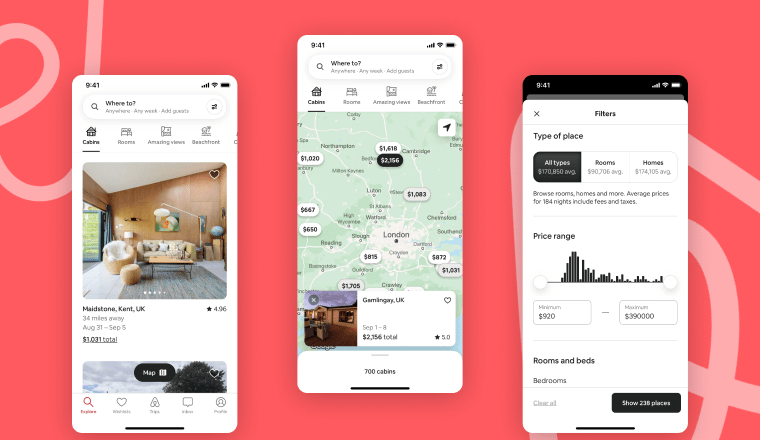In today's changing business world, it's crucial to create designs that appeal to people of all ages. Each generation has its own unique style and preferences, and we need to embrace these differences to connect with everyone through our designs.

In this article, we'll explore the details of designing websites for different generations and provide valuable insights. Our goal is to help your designs be both sophisticated and timeless, much like a classic vinyl record.
A Closer Look into The Generations
Baby Boomers: Contrary to some stereotypes, many Baby Boomers are quite tech-savvy. In fact, reports suggest that approximately 82% of Baby Boomers are active on at least one social media platform.
However, they tend to prefer websites that are straightforward to navigate. Complex interfaces or unnecessary gimmicks can deter them. They value clarity and simplicity and often spend more time reading detailed information on a webpage.
Generation X: Often referred to as the "Latchkey" generation, Gen Xers are known for their self-sufficiency and adaptability. They comfortably bridge the digital gap. According to stats, 72% of Gen Xers use the internet for business research .
They are more likely than any other age group to research products online before purchasing. Regarding website design for generations, they appreciate efficiency, practicality, and high-quality content.
Millennials: Millennials are the first true digital natives. This underscores the importance of mobile optimization in website design for this generation. Millennials also highly value authenticity, social proof (such as user reviews), and seamless integration with social media.
Generation Z: Often dubbed as digital "super-natives," Generation Z has grown up with the internet, social media, and mobile devices from a very early age. Recent data indicates that 98% of them possess a smartphone, and during the third quarter of the previous year, they spent an average of over 4 hours daily on mobile apps.
They expect websites to be intuitive, highly interactive, and filled with engaging content like videos and games.
Create Websites Everyone Loves!
Transform your online presence with designs that resonate across all generations.
Understanding the Characteristics of Each Generation
Baby Boomers: Baby Boomers, despite hailing from a time before the digital age, have demonstrated impressive adaptability to technology. They are willing to invest time in navigating websites thoroughly, displaying patience as they explore online spaces.
Baby Boomers tend to appreciate websites that offer comprehensive, well-structured content, often engaging more deeply with in-depth information. Additionally, they place significant emphasis on trust and security, valuing indicators such as credentials, testimonials, and security badges.
Generation X: Generation X, having grown up during the early days of the internet, exhibits a notable comfort with technology. They have a penchant for high-quality, well-researched content and can readily discern it from low-quality or misleading information.
Unlike younger generations, Gen Xers strike a balance between their online and offline activities. Additionally, they express greater concern for online privacy compared to their younger counterparts.
Millennials: Millennials, having come of age in the digital era, tend to be digital natives, possessing a strong command of technology and navigating online spaces with ease. They have a marked preference for mobile devices when it comes to browsing, shopping, and engaging in various online activities.
Millennials stand out as the most active users of social media platforms, frequently relying on these channels for recommendations and reviews. They also gravitate toward authentic and transparent brands in their online interactions.
Generation Z: Generation Z, surpassing the technological proficiency of any prior generation, is remarkably tech-savvy. Fluent in the language of digital media, they seamlessly multitask across multiple devices. Gen Z typically has an 8-second attention span, as demonstrated in a 2022 study by Microsoft, leading them to seek information delivered quickly and efficiently.
This generation is known for its passion for creating and sharing content, with a particular affinity for multimedia formats like videos and memes. Moreover, Gen Z is highly socially and environmentally conscious, expecting brands to uphold these values in their online presence.
Know The Principles of Website Design for Generations
Design Principles for Baby Boomers
When designing websites for Baby Boomers, simplicity and clarity should be paramount. The navigation should be straightforward, with clear menus and prominent placement of important information. Consider using larger typography with readable fonts and contrasting colors to accommodate those with visual impairments.
Detailed and informative content is appreciated, as Baby Boomers like to make well-informed decisions. Trust indicators such as customer testimonials and security badges can enhance credibility. Providing readily available customer support options like live chat or a prominent phone number can also appeal to this demographic.
Case Study: The website of the American Association of Retired Persons is a prime example of catering to the Baby Boomer demographic. It features large typography, straightforward navigation, and in-depth content on various relevant topics. Amazon, while not exclusive to any generation, aligns well with Boomer preferences due to its user-friendly design, detailed product descriptions, and customer reviews.

Design Principles for Generation X
Efficiency and functionality are key when designing for Generation X. They appreciate websites that are easy to navigate, with a clear path to the information or products they need. Providing informative, well-researched content appeals to their desire for substance over style.
Including clear privacy policies and ensuring secure handling of information through features like SSL certificates and trust seals is important. Websites should also be accessible and consistent across all devices, including desktop, tablet, and mobile. Displaying deals, savings, or cost comparisons can increase engagement and conversions, as Generation X is attracted to value.
Case Study: LinkedIn's clean, user-friendly design, quality content, and transparent privacy policies make it appealing to Generation X, as it serves as a professional networking platform.

Design Principles for Millennials
To cater to Millennials, mobile optimization is essential, as most of them use smartphones to access the web. Authentic and engaging content, including user-generated content like reviews and testimonials, is crucial.
Websites should allow for easy sharing to social media platforms and consider integrating social media feeds. Ensuring quick website loading times is important, as a slow website could lead to user frustration. Personalization, such as product recommendations and customized content, can enhance the user experience.
Case Study: Airbnb's user-friendly interface, mobile optimization, extensive user-generated content, and seamless integration with social media have made it appealing to Millennials.

Design Principles for Generation Z
Websites targeting Generation Z should prioritize fast loading times to keep their attention. Rich multimedia content like videos, animations, and high-quality images can engage Gen Z users. Interactive items like games and quizzes along with several virtual try-ons will cater to their need for engaging online experiences.
Mobile-first design is essential since Gen Z primarily uses smartphones to access the internet. Reflecting social and environmental responsibility in content and branding is appreciated by Gen Z, as they gravitate towards brands with a cause.
Case Study: TikTok, a short video platform, aligns perfectly with Gen Z preferences through its easy-to-use, mobile-first interface, highly engaging user-generated content and interactive features.

Achieve The Right Balance in Website Design for Generations
Designing a website that truly connects with a diverse range of age groups might initially sound like a daunting challenge. After all, each generation brings its own set of preferences and digital behaviors to the table. But fear not – it's not only achievable but incredibly rewarding. By applying some universal principles effectively, your website can become a magnet for users spanning multiple generations.
Critical Principles of Cross-Generational Website Design for Generations
- Usability: Across the board, users of all ages appreciate a website that's easy to navigate. A total of 37% of users report that inadequate navigation and design are the reasons they exit website. We recommend that you use clear menus, search features, and intuitive layouts are universally welcomed.
- Accessibility: Prioritize elements such as color contrast and font size to ensure that your website is accessible to others who have varying vision, hearing, and motor skills. This isn't just crucial for older users – it benefits everyone.
- Responsiveness: Different generations favor different devices – whether it's desktops, tablets, or mobile phones. Approximately 73.1% of web designers consider a lack of responsiveness in design to be the primary factor leading visitors to leave a website. Ensuring your website is responsive and provides a consistent user experience across these devices is paramount.
- Trustworthiness: Every generation places a premium on online security. Make sure your website is secure, prominently displays privacy policies, and utilizes trust seals when necessary.
Case Studies & Examples of Cross-Generational Websites
- Google: Google's search engine is a shining example of cross-generational appeal. Its minimalist design, straightforward functionality, and high accessibility make it user-friendly for all age groups. Moreover, it exemplifies trustworthiness through the use of secure HTTPS protocols.
- Wikipedia: Wikipedia, the go-to source for information, boasts a simple, clean design, easy navigation, and a responsive layout. It offers in-depth content that resonates with users from all generations. Its community-driven verification process ensures a high level of trust.


Striking the perfect balance in Website Design for Generations is indeed an art. However, armed with a deep understanding of each generation's unique needs and preferences, along with the application of universal design principles, it's entirely possible to create a website that's universally appealing, engaging, and user-friendly.
Frequently Asked Questions on Website Design for Generations
Ques 1: Why consider generational differences in website design?
Ans: Understanding generational differences enhances user experience, retention, and business outcomes.
Ques 2: How can I design for multiple generations without compromising aesthetics?
Ans: Focus on universal design principles like usability, accessibility, and trustworthiness.
Ques 3: What common design mistakes should I avoid for specific generations?
Ans: Avoid assumptions, complexity, clutter, and neglecting mobile optimization.
Ques 4: How can I stay updated for future generations' design needs?
Ans: Stay informed through industry sources, conferences, and user experience research.
Ques 5: Why is accessibility vital in age-inclusive web design, and how do I ensure it?
Ans: Accessibility is essential; ensure it through factors like font size, color contrast, keyboard navigation, and testing with users from different age groups.

